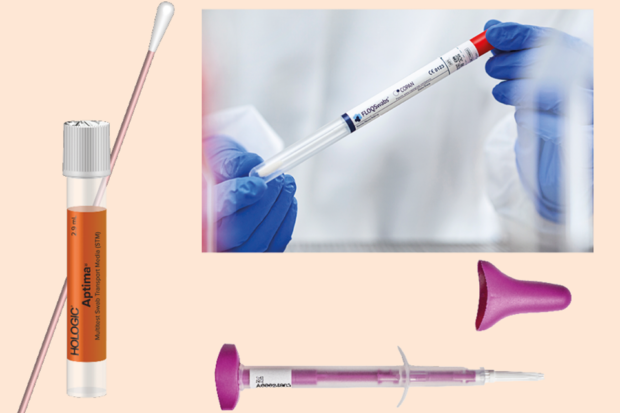
The HPValidate study has published its final results.
HPValidate was set up in 2021 as a first step to find out if vaginal self-taken samples are as accurate at identifying human papillomavirus (HPV) as standard clinician-taken screening tests in the NHS Cervical Screening Programme in England.
It also sought people’s views of their experience of doing HPV self-sampling and their attitudes towards using the method in the future.
The study found that:
- 4 combinations of self-collection device and test worked well – these can now be used to help find out how self-sampling could be introduced into screening
- most participants reported an excellent (75%) or good (23%) overall experience of using a self-sampling test
- most participants (85%) said they would like to be given a choice between self-sampling and clinician screening, but 23% felt it would be difficult to choose and 15% would worry about making a choice
- nearly half (48%) of participants would prefer to receive a recommendation of which method they should use
See the UK National Screening Committee (UK NSC) HPValidate study summary.
The HPValidate findings contribute to a widening evidence base on the use of HPV self-sampling in cervical screening.
The study can inform the choice of self-sampling kits and testing platforms to use if self-sampling is offered to people who have never or rarely attended cervical screening. This ‘under-screened’ group is at a higher risk of HPV infection and associated disease.
The HPValidate results could also be used in further scientific evaluations to help determine if self-sampling could be introduced effectively as a future option for everyone invited for screening.
Background
Cervical screening detects types of HPV which can cause abnormal cells in the cervix. Removing abnormal cells can prevent cervical cancer developing.
However, barriers like pain, embarrassment and inconvenience can stop people going for cervical screening.
It is important to try to remove barriers to screening participation where possible. One option could be for people to take their own sample for HPV testing, rather than having a clinician take their sample.
In 2019, the UK National Screening Committee (UK NSC) recommended that more evidence should be collected on the potential of HPV self-sampling to improve the NHS Cervical Screening Programme.
Accuracy of self-sampling
HPValidate collected data on the use of 3 different collection devices and the 2 HPV tests used by laboratories in the UK for testing cervical screening samples.
The study invited more than 6,000 eligible people to participate, at GP practices and at colposcopy clinics. The laboratories tested both self-taken and clinician-taken samples so that the ability of each method to accurately detect HPV could be compared.
The following 4 self-collection device and test combinations were found to work well:
- Evalyn Brush (collection device) + Cobas (HPV test)
- FLOQswabs + Cobas
- FLOQswabs + Aptima
- Aptima Multitest + Aptima
These combinations can now be used to help work out how vaginal HPV self-sampling could be introduced most effectively in screening.
You can download the full clinical validation report published by Queen Mary University of London (QMUL) from the QMUL website.
Acceptability to users
People taking part in HPValidate who completed their self-sample at a GP surgery were asked to fill in a short questionnaire and 2,320 people (48% of the participants) did so.
The survey aimed to capture people’s experiences and their attitudes towards using self-sampling in the future.
Most participants said their overall experience of using a self-sample was excellent (75%) or good (23%). Very few participants experienced a lot of, or severe, discomfort (1%) or found it moderately or very unpleasant (2%).
Most survey respondents (85%) said they would like to be given a choice between self-sampling and clinician screening. However, 23% said it would be difficult to choose, 15% would worry about making a choice, and nearly half (48%) would prefer to receive a recommendation of which method to use.
The study therefore highlighted the need to explore and evaluate different methods of offering a choice to understand how best to support people to make an informed decision.
You can download the full user acceptability report from the QMUL website.
Next steps
The UK NSC will shortly open a public consultation on a recommendation that a self-sampling option should be offered to under-screened individuals in the cervical screening programme.
Meanwhile, the National Institute for Health and Care Research (NIHR) is commissioning an in-service evaluation (ISE) on the routine use of self-sampling in the NHS Cervical Screening Programme to all screening participants. This ISE will help determine how well self-sampling could work in practice, and what the implications might be, if offered as an optional screening method to all eligible people.
Watch this space for developments.
Acknowledgements
We would like to extend a huge thank you to everyone who participated in HPValidate and made completion of the project possible.
This includes the HPV testing laboratories, GP practices and colposcopy units and their staff, and everyone who took part in the study. They have all made an important contribution to furthering the evidence on HPV self-sampling in the UK. Without their participation this project would not have been possible.
Keep up to date
The UK NSC blog provides up to date news from the UK National Screening Committee. You can register to receive updates direct to your inbox, so there’s no need to keep checking for new articles. If you have any questions about this blog article, or about the work of the UK NSC, email uknsc@dhsc.gov.uk.